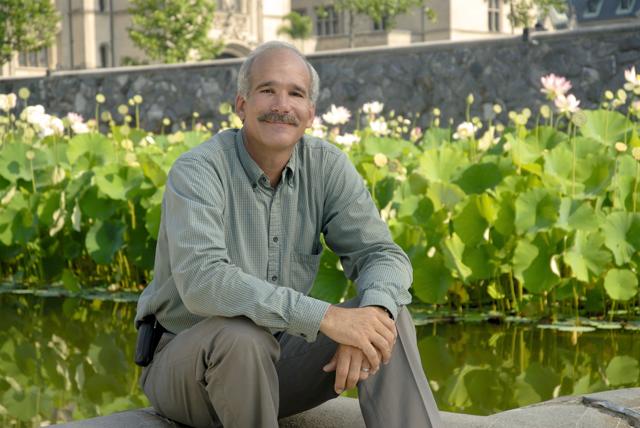Great gardens are experienced the same way fine art is — as an emotional connection. The Biltmore gardens, designed by pioneering landscape architect Frederick Law Olmsted under George Vanderbilt’s patronage, are a work of genius. Now 116 years old, the gardens refresh and inspire more than a million visitors per year.
Parker Andes has been the estate’s director of horticulture for the last 10 years; Xpress spoke with him recently to gain some insight into what it takes to keep Olmsted’s vision alive.
Mountain Xpress: As director of horticulture, what does your job entail?
Parker Andes: Mostly weed-pulling. After that, I get the pleasure of working with everyone from arborists to gardeners and groundskeepers. We have 60 employees for the gardens and grounds. This is an 8,000-acre working estate, so it includes maintaining gravel roads, dealing with drainage issues and toppled trees, and making those minute-by-minute decisions that create beautiful gardens.
Do you try to keep Olmsted’s design intact, or do you change it around?
We try to maintain Olmsted’s design intent. Olmsted wanted the Approach Road (the three-mile road that brings you up to the house) to have no distant views, so that you have this experience with the house first. Then, going into the house and onto the loggia, where you see all the way to Mount Pisgah, the person should be like, “This is it!”
Recently, when President Obama visited the house, he had that experience. He and his wife loved the view from the loggia. So the anticipation that a guest feels coming up the Approach Road, entering the house and then seeing that vista beyond: That is what Olmsted was after, and we’ve kept that alive.
What are some of the challenges?
This is an interesting one. We just finished installing one of the ponds on the Approach Road. There were dozens in the initial plans that are now gone. Olmsted was quite specific in how far the sightline was to be for the pond: 10 to 12 feet, and the waterfall was placed slightly perpendicular to the road. But in 1895, people came to the house in horse and buggy, riding about 2 to 3 mph. Now, guests come in cars that sit lower and go faster.
We had to consider that: If we followed the plan exactly, people would drive right by the pond. They wouldn’t see it or the waterfall. Susanne Woodell, our historic-gardens manager, suggested we make the waterfall more parallel to the road, so guests wouldn’t miss it. And the pond had to be wider for the same reason. The execution is different, but the design intent is the same.
Are there times when you ignore Olmsted’s plans?
Well, not ignore, but we say if you can see it from the house, it stays the same. If not, we don’t worry about it as much.
For instance, in 2004 Hurricane Ivan felled 40 trees just above the azalea garden. From the balcony of the Louis XV suite, where the children were born, you could see this swath of winter color, a ribbon of pines — it was some of those trees that fell.
We prepared a design-intent statement for the area, which turned out to have some drainage and wash problems. Some folks from N.C. State helped with storm-water flow, and then we planted back white pines (what was originally there). That’s an example of sticking closely to Olmsted’s plan, since the intention was to see that winter color from the house.
OK, the question everyone asks: How many tulip bulbs did you plant this past year?
108,000. The bloom peak is mid-April; they begin blooming the first week of April and continue to the third week. Obviously, weather is a factor: We can have frost up to May 15; this year, the last frost was May 7. But anytime you come to the garden is a good time. There is always something to see, at least in my opinion. Everyone’s perception of a garden is different, and for some people, if it isn’t blooming, it isn’t a garden. That’s part of the learning experience, I hope — seeing gardens in a new way.
What’s your favorite part of the garden?
The trees. I wouldn’t want to work in a new garden, because I love these old trees. Some of them predate Vanderbilt. My favorites are the Nordmann fir, which has beautiful new growth, and the katsura tree, which isn’t great color in fall but has this scent like cotton candy.
Aside from Biltmore, do you have another favorite garden?
Longwood Gardens in Kennett Square, Pa. It feels like another home to me.
— Cinthia Milner gardens in Leicester.





This article has inspired me to visit Biltmore again–and soon!